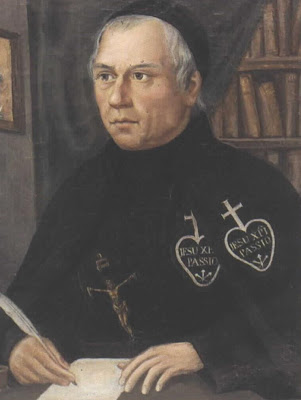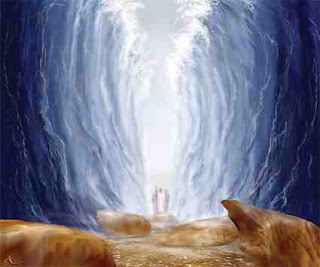From the booklet Appreciations of Teresa Helena Higginson, Schoolteacher and Mystic, by Brian Honner.
On returning to England Teresa spent some three years assisting the Garnett family in Liverpool. Miss Margaret Garnett, who seems to have been their mainstay, had fallen ill and Canon Snow (whose teacher she had been) had asked Teresa to come to their aid. She nursed Margaret until her death and then secured for the remaining brother and sister a little shop in the Mount Pleasant area of the city.
One witness here is Alfred, the youngest of the family who had from birth been handicapped with a leg disease. If Mrs. McKeon is the best observer of Teresa in the classroom it is to Alfred that we must turn for an impression of her as a nurse and quietly efficient family friend. Miss Arkwright who knew him very well, made from their frequent talks together a written account of his testimony. Some of this, including Teresa's prediction to him of the present Liverpool Catholic cathedral, she published, but the following may be new to readers:
Liverpool Metropolitan Cathedral, with the 'Crown of Thorns' dome, foreseen by Teresa
"When Teresa came to the Garnetts she was eating nothing at all and afterwards in obedience to Canon Snow began to take a little food. Every morning after hearing two or three masses she sat down to read the very many letters she received daily. These letters were after her death discovered to have been from priests, religious and others asking advice. She dealt with her correspondence in a very methodical way, sorting the letters into separate piles, and all were read before breakfast. Teresa, Mr. Garnett said, never seemed to want food. He would pour out her half a cup of tea, and more often than not it would get cold. She would pour hot water into it so that it was more like water than tea. Sometimes Mr. Garnett would try to put some cream into her tea while she was reading her letters but she would look up at him with her usual sweet smile and put her hand gently over the cup, and he never succeeded in his attempt."
Such was Alfred's devotion to Teresa that after her death, before opening his shop he would go into her old room and pray to her, and after closing at night, no matter how tired he felt, would again enter her room and, in spite of his painful lameness, kneel and pray again. Until his death in 1940 he paid for a friend to go to Neston each year to put flowers on her grave for her birthday; 35 years of rememberance!
An unforgettable impression of Alfred Garnett in later years has been left by the Abbé Billé, translator into French of Lady Kerr's life of Teresa. Somewhere about the year 1936 he called on several witnesses, and we find him at Mount Pleasant enquiring of a passerby the whereabouts of Mr. Garnett:
"Oh yes, go down there to that little shop on the corner!" I directed my steps to the door, which was open. It was a little grocery of most modest appearance, with all the goods jumbled together, common and uninviting. No one was there when I entered but presently an old man emerged from behind the counter. Before I had time to speak he looked at me and exclaimed 'You are the Abbé Billé! You are the Abbé Billé!' In spite of my surprise at being addressed by my own name, I admitted he was right and told him I had come to speak to him about Teresa Higginson. He then led me into a little back room. Here everything was piled one on top of the other - clothes, papers, old kitchen utensils, etc. He looked round for a seat to offer me and drew one out from beneath an pile of old papers. It was leaning against the wall in a corner. He sat on an old chest, pushing aside various odds and ends. His voice was feeble and I had to lean towards him to catch what he said. 'I was the one who accompanied her to the station very late one night in September 1904 when she left us to go to Chudleigh in Devonshire' he said. 'She had a feeling she would not return and gave me her last instructions: 'If I do not return, give this case to Canon Snow' she said. 'This I did, although I did not know what was in it. She has a particular devotion to the souls in purgatory and prayed continually for them - not those of her own family but for others, the most abandoned, for those Our Lord Himself wished to deliver. Her favours and care Teresa lavished on others rather than her friends.'
"What struck me particularly in talking to him was the strong conviction of the old man in the necessity of suffering - wretchedness truly seemed to be a mark of predilection, of the special protection of his friend. And in it he was very, very happy. 'Have confidence in her' he told me, 'she will help you - but has a way of waiting until one gets into great difficulties!' At last I rose to take my leave. Mr. Garnett took my hands and looked at me with tears in his large eyes. Mine also moistened. He knelt for my blessing, and after losing myself in the noisy streets of the great city I still felt that he was following me with his affectionate gaze. In spite of his extreme poverty this good old man knows how to communicate to his friends a little of the happiness and joy he has deep in his heart."
(From the French magazine Message Jan - Feb 1938).
,_corrected_perspective.jpg)










